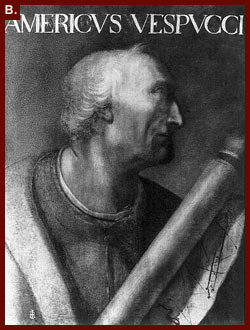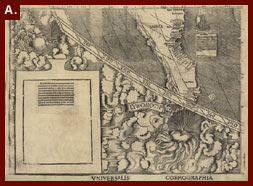EDITOR’s NOTE: This comes from JUSTICE INITIATIVE, an organization founded by Heather Gray that often shares commentary on truth and justice issues. They can be reached at hmcgray@earthlink.net.
The use of the Term “America’ and Where it Originated
The term ‘America’ is used beyond its reference to the United States.
When addressing the politics surrounding the US and Venezuela, invariably the importance of Simon Bolivar comes to the fore. The remarkable leader Hugo Chavez referred to Venezuela essentially as the ongoing Bolivarian Revolution! Without doubt, the significant role of Simon Bolivar continues to resonate in Venezuela and South America overall.
Then, when researching the works and philosophy of Simon Bolivar, I came across the narrative by him that refers to “America” and its needs.
Now, I know that most in the United States refer to the United States singularly as “America” yet we are mistaken to do so. Venezuelans and many others in South America will refer to their countries as “America” as well.
Here is an example of the “American” conceptual framework vis a vis Venezuela from a paper by John Lynch in 1983, from the University of London, entitled “Simon Bolivar and the Age of Revolution. ” In this segment below, with a quote from Bolivar, ‘America’ is being referred to in the context of ‘Venezuela’ under Spanish rule:
Bolivar was not a mere creature of his age, not a slave to French or North American examples. His own revolution was unique, and in developing his ideas and his policies he followed not the models of the western world but the needs of his own America….
But there were problems of identity. Americans by birth, they were neither Indian nor European, but in an ambiguous position between usurped and usurpers. And under Spanish rule their political role was purely passive: ‘America was denied not only its freedom but even an active and effective tyranny’. Most despotic rulers, he argued, at least had an organised system of oppression in which subordinate agents participated at various levels of administration. But under Spanish absolutism Americans were not allowed to exercise any functions of government or even of internal administration. Thus, he concluded, they were not only deprived of their rights but kept in a state of political infancy.
____
John Lynch (11 January 1927 – 4 April 2018) was Professor of Latin American History at the University of London. He spent most of his academic career at University College, and then from 1974 to 1987 as Director of the Institute of Latin American Studies. The main focus of his work was Spanish America in the period 1750-1850. (Wikipedia)
Then I realized that I had never researched where the name “America” came from in the first place. As noted below, ‘America is named after Amerigo Vespucci, the Italian explorer’ and “America,” is a Latinized version of “Amerigo.”
What is the Origin of the Name ‘Venezuela’?
The name ‘Venezuela’, I discovered, came from the second Spanish expedition to the area in 1499, following Christopher Columbus ‘s expedition in 1492. ‘Venezuela’ means “little Venice.” Here’s a short explanation:
The second Spanish expedition, led by Alonso de Ojeda, sailing along the length of the northern coast of South America in 1499, gave the name Venezuela (“little Venice” in Spanish) to the Gulf of Venezuela-because of its perceived similarity to the Italian city.
(Wikipedia)
____
Below, please see the interesting short narrative of the origin of the term “America”.
Heather Gray
February 17, 2019
Justice Initiative
 The Loc.Gov
The Loc.Gov
Wise Guide

B. [Portrait of Amerigo Vespucci], Reproduction of anonymous painting. [No date found on item.] Prints and Photographs Division. Reproduction No.: LC-USZ62-63115
America is named after Amerigo Vespucci, the Italian explorer who set forth the then revolutionary concept that the lands that Christopher Columbus sailed to in 1492 were part of a separate continent. A map created in 1507 by Martin Waldseemüller was the first to depict this new continent with the name “America,” a Latinized version of “Amerigo.”
The map grew out of an ambitious project in St. Dié, France, in the early years of the 16th century, to update geographic knowledge flowing from the new discoveries of the late 15th and early 16th centuries. Martin Waldseemüller’s large world map was the most exciting product of that research effort. He included on the map data gathered by Vespucci during his voyages of 1501-1502 to the New World. Waldseemüller named the new lands “America” on his 1507 map in the recognition of Vespucci’s understanding that a new continent had been uncovered following Columbus’ and subsequent voyages in the late 15th century. An edition of 1,000 copies of the large wood-cut print was reportedly printed and sold, but no other copy is known to have survived. It was the first map, printed or manuscript, to depict clearly a separate Western Hemisphere, with the Pacific as a separate ocean. The map reflected a huge leap forward in knowledge, recognizing the newly found American landmass and forever changing mankind’s understanding and perception of the world itself.
The Library of Congress recently completed the purchase of the only known extant copy of this map for $10 million, thanks to the generosity of the U.S. Congress, Discovery Channel, Gerald Lenfest, David Koch and several other donors.
A. Waldseemüller, [Map of the World Naming “America,” 1507.
Geography and Map Division
 For more than 350 years the map was housed in a 16th century castle in Wolfegg, in southern Germany. The introduction to Waldseemüller’s “Cosmographie” is in the Library’s Rare Book and Special Collections Division. This extremely rare work contains the first suggestion that the area of Columbus’ discovery be named “America” in honor of Amerigo Vespucci, who recognized that a “New World,” the so-called fourth part of the world, had been reached through Columbus’ voyage. Before that time, there was no name that collectively identified the Western Hemisphere. The earlier Spanish explorers referred to the area as the Indies believing, as did Columbus, that it was a part of eastern Asia. The Vespucci Family Papers are housed in the Library’s Manuscript Division.
For more than 350 years the map was housed in a 16th century castle in Wolfegg, in southern Germany. The introduction to Waldseemüller’s “Cosmographie” is in the Library’s Rare Book and Special Collections Division. This extremely rare work contains the first suggestion that the area of Columbus’ discovery be named “America” in honor of Amerigo Vespucci, who recognized that a “New World,” the so-called fourth part of the world, had been reached through Columbus’ voyage. Before that time, there was no name that collectively identified the Western Hemisphere. The earlier Spanish explorers referred to the area as the Indies believing, as did Columbus, that it was a part of eastern Asia. The Vespucci Family Papers are housed in the Library’s Manuscript Division.
____
The Waldseemüller map opens the new Library exhibition “Rivers, Edens, Empires: Lewis & Clark and the Revealing of America.” It is one of the treasures of the Library and of the Geography and Map Division, which has more than 4.6 million cartographic items in its collections. Many of these items are online in American Memory, the Library’s Web site of more than 120 thematic collections ranging from the papers of U.S. presidents, civil rights leaders and suffragists to early motion pictures, sound recordings, photographs and baseball cards.
# # #
